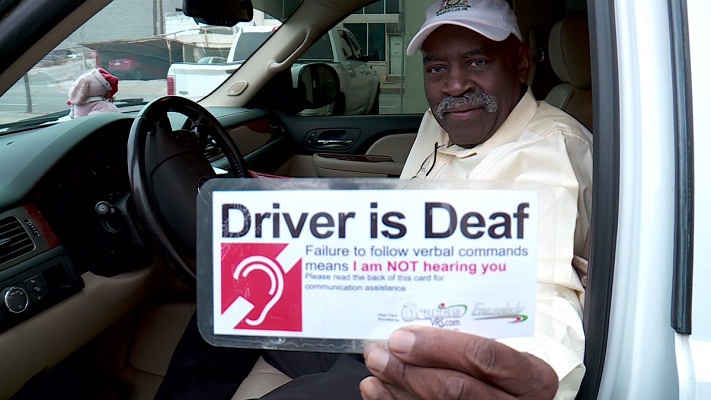Driving with Hearing Loss: Legal Rights, Licensing, and Safe Practices for Deaf Drivers

Introduction
Millions of Americans live with some form of hearing loss, and many wonder if they can legally drive or obtain a driver’s license. This article provides a comprehensive overview of the rights, requirements, and practical steps for deaf and hard-of-hearing individuals seeking to drive safely and legally in the United States. We also address specific scenarios, such as commercial driving, and offer actionable guidance for navigating the licensing process and overcoming common challenges.
Is It Legal for Deaf People to Drive?
It is completely legal for deaf and hard-of-hearing individuals to drive passenger vehicles in all 50 states. There are no federal restrictions preventing people with hearing loss from obtaining a standard driver’s license, and state laws support equality in access to driving privileges. Extensive research and decades of practical experience show that deaf drivers are as safe as hearing drivers, often compensating by relying more heavily on visual information and situational awareness [2] . State DMVs are required to evaluate deaf applicants using the same driving tests and standards as hearing applicants, with some minor adaptations to ensure safety and accessibility [1] .
Licensing Requirements for Deaf and Hard-of-Hearing Drivers
While the process for obtaining a driver’s license is fundamentally the same for everyone, deaf drivers may encounter a few additional steps or considerations:
- Notification: Many states require applicants to notify the DMV of their hearing impairment. This is primarily so the DMV can offer appropriate accommodations and note the driver’s status if necessary [1] .
- License Notations: Some states will place a symbol or code on the license indicating the holder is deaf or hard of hearing. This is not a restriction on driving but serves to inform law enforcement of the driver’s communication needs [2] .
- Equipment Requirements: The DMV may require the use of full-view mirrors to enhance situational awareness. Some states may also encourage or require visual alert systems in the vehicle, such as devices that translate audio signals (like sirens or horns) into dashboard lights or vibrations [1] .
- Driving Lessons and Testing: Deaf individuals must complete the same pre-licensing courses, learner’s permit periods, and road tests. Under the Americans with Disabilities Act (ADA), DMVs must provide free auxiliary aids (such as sign language interpreters) during testing upon request [3] .
It is important to check your state’s DMV website or contact their office to understand any specific requirements in your jurisdiction. If you need accommodations such as an interpreter, request these in advance of your appointment or exam.
Adaptations and Safety Tools for Deaf Drivers
Modern vehicles and assistive technology allow deaf drivers to operate safely and confidently on the road. Common adaptations include:
- Full-view or panoramic mirrors to maximize visibility and reduce blind spots.
- Audio-tactile converters that translate sounds like sirens and horns into visual or tactile signals (e.g., a flashing light on the dashboard or a vibration in the steering wheel) [2] .
- Vibrating alert systems for emergency vehicle warnings or other critical sounds.
- Communication cards stating “I am deaf or hard of hearing” to facilitate interactions with law enforcement and emergency personnel [1] .
Deaf drivers often develop exceptional visual scanning habits and situational awareness, using mirrors and environmental cues more intensively than hearing drivers. Studies support the effectiveness of these compensatory strategies, showing no increased accident risk among deaf drivers compared to the general population [5] .
Overcoming Challenges: Police Stops and Communication
One of the most significant concerns for deaf drivers is communication during traffic stops or emergency situations. Unfortunately, misunderstandings with law enforcement have sometimes led to confusion or even unsafe outcomes [3] . To address this:
- Carry a communication card in your vehicle and keep it accessible. This card can state that you are deaf or hard of hearing and outline preferred communication methods (e.g., writing, texting).
- Inform the officer immediately of your impairment by holding up the card or using gestures. Remain calm and cooperative.
- Know your rights under the ADA. Law enforcement agencies are required by law to provide effective communication, such as written notes or qualified interpreters when needed [3] .
- Consider alerting devices for your car that can signal to approaching officers you are deaf, such as window decals or license plate symbols where available.
If you experience discrimination or communication breakdowns with police or other officials, you may file a complaint with your state’s ADA coordinator or contact advocacy organizations for support.

Source: etsy.com
Commercial Driver’s Licenses (CDL) and Professional Driving
The situation for commercial driving is more complex. Federal regulations for Commercial Driver’s Licenses (CDL) historically included a hearing requirement. However, exemptions are now available, and advocacy efforts are ongoing to ensure fair access for deaf and hard-of-hearing drivers [4] :
- Deaf individuals may apply for waivers or exemptions from the U.S. Department of Transportation’s (DOT) hearing requirements, provided they meet all other qualifications and maintain a safe driving record.
- DOT policy changes and research indicate that deaf drivers are not at increased risk for commercial vehicle accidents [4] .
- If you are interested in obtaining a CDL, contact your state’s Department of Motor Vehicles or the Federal Motor Carrier Safety Administration for guidance on applying for an exemption. The National Association of the Deaf (NAD) also provides resources and support for applicants.
Because requirements and processes can change, always verify the most current information with official agencies before starting your application.

Source: walmart.com
Step-by-Step Guidance for Deaf and Hard-of-Hearing Drivers
- Check State Requirements: Visit your state’s DMV website to review current policies regarding hearing impairments, required documentation, and available accommodations.
- Schedule a Hearing Evaluation (if required): Some states may require medical documentation or an evaluation from an audiologist or physician. Bring any necessary paperwork to your DMV appointment.
- Request Accommodations: If you need a sign language interpreter or assistive devices for the written or road test, contact the DMV well in advance to arrange these services, as required by the ADA [3] .
- Complete Driver Training: Enroll in a state-approved driving course, paying special attention to visual scanning, mirror use, and emergency awareness. Many driving schools have experience working with deaf students.
- Obtain a Learner’s Permit: Pass the written knowledge test with appropriate accommodations as needed.
- Take the Road Test: Demonstrate safe driving skills. You may use communication cards or interpreters as required during the exam.
- Receive Your License: Once you pass, your license may include a code or symbol indicating your hearing status. This is for informational purposes and does not restrict your driving privileges.
- Equip Your Vehicle: Install any required adaptations, such as panoramic mirrors or visual alert systems. Consider purchasing additional assistive technology for enhanced safety.
- Carry Communication Tools: Keep a communication card and notepad in your vehicle at all times for interactions with law enforcement or emergency responders.
If you encounter any barriers or discrimination, document the incident and seek assistance from advocacy organizations or your state’s ADA coordinator.
Alternative Approaches and Additional Resources
For those who may not be comfortable driving, public transportation, ridesharing, and paratransit services are widely available. Some cities and regions offer specialized training or support programs for deaf drivers, including defensive driving courses tailored to individuals with hearing loss. You can search for local organizations, such as independent living centers or deaf advocacy groups, for additional guidance and resources.
If you are interested in commercial driving, be aware that the exemption process may take several months and requires a clean driving record. The National Association of the Deaf provides up-to-date information and support for applicants pursuing a CDL.
Summary and Key Takeaways
Deaf and hard-of-hearing individuals across the United States have the legal right to obtain a driver’s license for personal vehicles, with appropriate accommodations and safety adaptations as needed. While commercial driving presents added challenges, recent policy changes and advocacy efforts are improving access. By following the steps outlined above and utilizing available resources, deaf drivers can enjoy the freedom and independence that comes with driving, while staying safe and compliant with all relevant laws.
References
- [1] DMVCheatSheets (2022). Can You Get A Driver’s License If You Are Deaf?
- [2] Miracle-Ear (2024). Can people with hearing loss drive?
- [3] Meirowitz & Wasserberg (2025). Driving While Deaf
- [4] National Association of the Deaf. Commercial Driver’s Licenses
- [5] EndDD.org. Are Deaf People Allowed to Drive?






